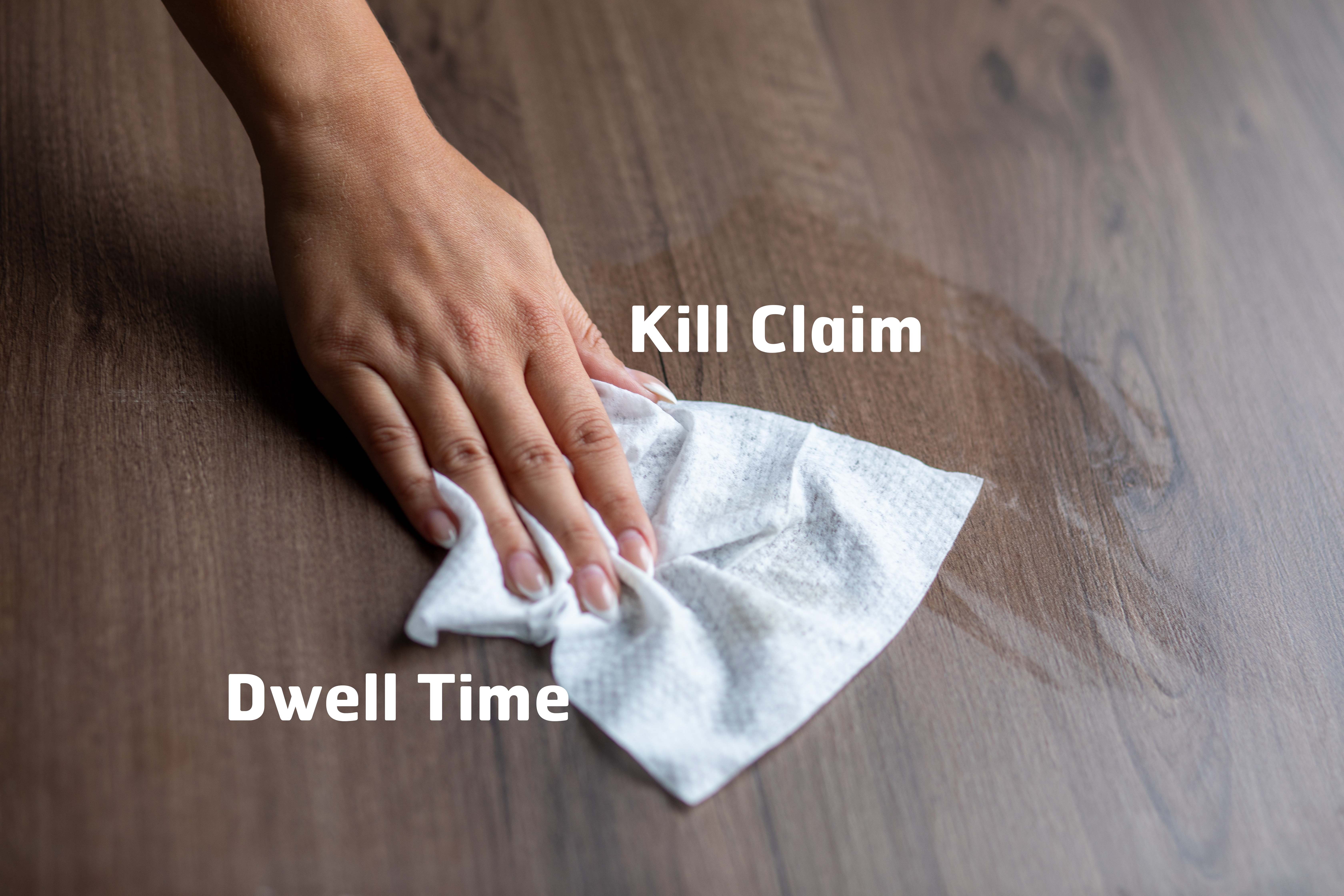Kill Claim and Dwell Time: What Do They Mean?
When reading the label on any disinfecting product package, you will notice the terms “kill claim” and “dwell time.” While the definition of these terms may seem like second nature to anyone who works in the industry, they can be confusing to people who use the products.
Because surfaces can only be properly disinfected if products are used according to the instructions on the label, it is very important that end users understand the terminology so they can be confident they are using the correct product for their application.
What is “Kill Claim”?
Kill claim is the list of all the specific bacteria, viruses, and fungi that the product has been proven to eliminate or kill.
To be able to include a kill claim, a product must be properly tested on identified antimicrobials and registered by the EPA, meeting stringent standards that verify the product’s efficacy on hard surfaces. To ensure the full efficacy of any kill claim made by an EPA-registered product, it is critical to adhere to the indicated dwell time.
What is “Dwell Time”?
Many bacteria, viruses, and fungi can withstand some disinfecting solutions for a short span of time. The “dwell time” (also called “contact time”) indicates how long a solution needs to stay visibly wet on a surface to meet its kill claim.
For instance, if a product label states that a disinfecting product has a two-minute dwell time to kill a specific bacteria, virus, or fungi that means the surface should remain visibly wet for two minutes after the solution has been applied to completely eliminate or kill it.

The more you know, the safer you can be
Anyone who disinfects surfaces, in their home or at their place of business, will benefit from learning the basics about kill claim and dwell time so they can better understand what germs they are targeting and how to best eliminate or kill them. The better informed end users are about these details, the safer everybody can be against harmful viruses and bacteria.
Works Cited:
- https://www.epa.gov/pesticide-analytical-methods/antimicrobial-testing-methods-procedures-developed-epas-microbiology
- https://www.epa.gov/pesticide-labels/use-term-germs-antimicrobial-labels
- https://sfenvironment.org/sites/default/files/fliers/files/sfe_th_safer_products_and_practices_for_disinfecting.pdf

